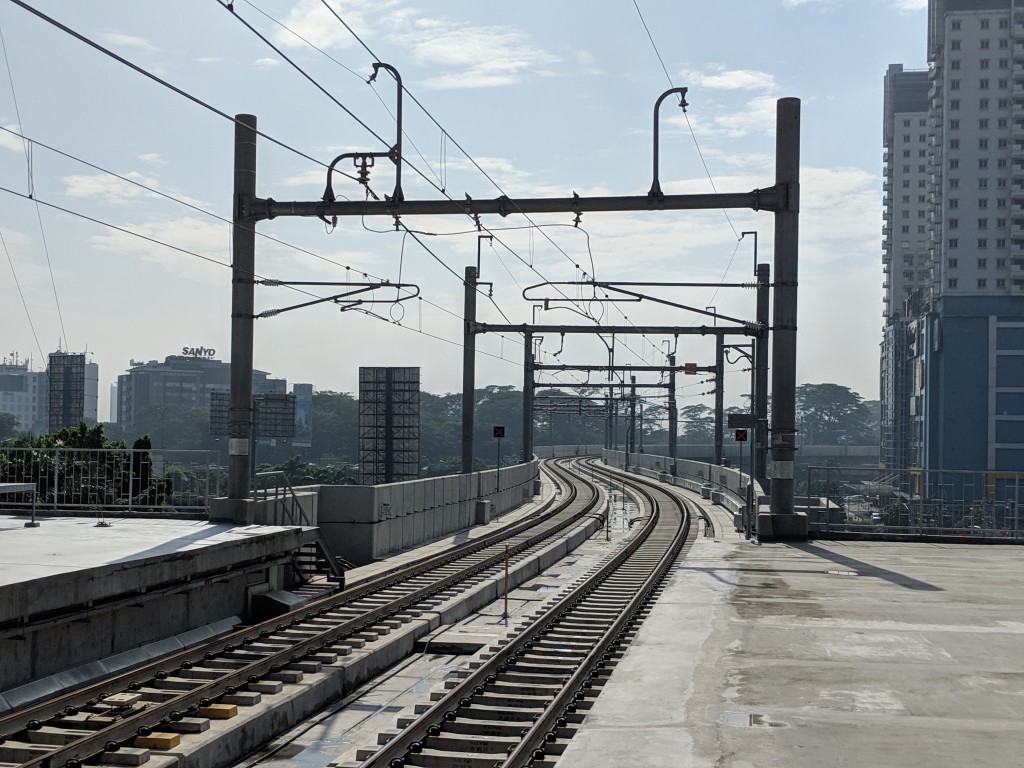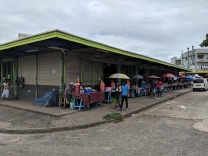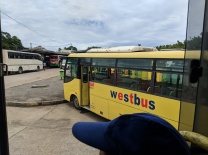The first bula came at the airport check-in counter in Sydney. The frequency picked up on board Fiji Airways, where every announcement was prefixed with a bula, and reached a feverish crescendo on arrival at Nadi, where every airport worker seemed oddly insistent on bula-ing every arriving tourist. Only at the Immigration counter did the puzzle pieces fall into place: there was a HappyOrNot® Smiley Terminal™ enquiring whether you had been sufficiently enthusiastically bula-ed on your arrival, so there were clearly staff bonuses on the line.
Bula is the Fijian word for “life” and an all-purpose greeting much like its Hawaiian cognate aloha, but it’s also the centerpiece of a very successful Saatchi & Saatchi -crafted branding campaign that ensures it’s the first and often last word of the local language firmly imprinted on local tourists. (It’s actually pronounced m-BU-la, but tourists and locals alike seem to delight in hamming it up as BOO-LAH.) Hence you can ride a Bula Bus or a Bula Bike to the Big Bula waterpark, have a drink and a Bula Burger at the Bula Bar and then go island hopping with a Bula Pass.
Bula 1: Denarau
All these Bulas and more can be found on Denarau Island, which juts out of a peninsula near Nadi like an angry pimple. The island was molded into its present form in the 1980s by rapacious Japanese developer Harunori Takahashi, who bulldozed its 850 acres of swamps and mangroves and replaced them with high-end resorts, golf courses, marinas and gated housing. The only mosquito in the ointment is that mangroves grow in mud, meaning that despite decades of landscaping, including a few truckloads of imported white sand in strategic spots, both the beaches around Denarau and the water lapping at them are expanses of impenetrable slate grey muck.
The resorts thus expend much effort to distract tourists from this rather basic failing. They’re all suspended well above the surf on concrete plates, angled so that you can Instagram the infinity edge pool and have it blend seamlessly into the palm-fringed Mamanuca Islands in the background, conveniently ignoring all that squelchy mud in the middle. And if you’re shooting advertising for the Sofitel Denarau, as shown below, you can use a wide-angle lens to make the pool look like it’s actually the ocean and add in a young, nubile woman as a tantalizing hint of what awaits you.
 Of course, the young woman, too, is a lie: if anything, this is the one demographic striking in its absence at Denarau’s resorts. (There’s a backpacker scene on Fiji too, but Denarau is firmly off that trail.) Instead the pools are sardine-packed with tattooed middle-aged yobbos in wifebeaters, their morbidly obese offspring, the odd honeymoon or wedding anniversary couple regretting their choice, and one older lady whose coiffure and countenance bore a truly remarkable resemblance to Donald Trump in hot pink lipstick.
Of course, the young woman, too, is a lie: if anything, this is the one demographic striking in its absence at Denarau’s resorts. (There’s a backpacker scene on Fiji too, but Denarau is firmly off that trail.) Instead the pools are sardine-packed with tattooed middle-aged yobbos in wifebeaters, their morbidly obese offspring, the odd honeymoon or wedding anniversary couple regretting their choice, and one older lady whose coiffure and countenance bore a truly remarkable resemblance to Donald Trump in hot pink lipstick.
As a rule, tourists in Denarau are there to Get Away From It All™, including their kids, whom many parents opt to dump in Kids Clubs like the Sheraton’s Lai Lai Club, where Recreation Associates will watch your offspring from 8:30 in the morning until 8:30 at night. The Lai Lai Club is a concrete cellblock with handpainted Nemos and Ariels on sweaty blue walls, giving it the general atmosphere of a children’s cancer ward. While incarcerated, kids are explicitly not allowed in the pool, even the shallow one right next to the Club; instead, they are treated to amusements like Fish Feeding, which we attended early one morning out of curiosity. The tots were lined up and marched off in formation down past the concrete to the mudflats, given slices of Wonderbread, and instructed to take exactly five steps forward and throw the bread into the ocean. Nothing happened, unless you count the waves bringing the bread back to the shore and one of the kids asking: “Isn’t this littering?” A Recreation Associate took some soggy returned pieces and flung them further out, where the water roiled a bit and rubbery lips attached to invisible sea monsters devoured the bread. Fish fed! 11 hours to go.
So what do parents do? Fear not, there’s plenty of activities for them as well. One fine morning, a fit young Recreation Associate bounced into the Sheraton’s pool, declared himself to be DJ Bobo, and started leading aquafit exercises to the accompaniment of a tinny boombox. I initially suspected the playlist had to have been selected with tongue firmly in cheek, kicking off with Avicii’s Wake Me Up (“…when it’s all over, and I lose myself”) and continuing with South African anthem Gimme Hope Jo’anna (“She’s got a system they call apartheid / It keeps a brother in a subjection”), but this theory was quickly quashed when it was followed by a techno remix of La Bamba. The name of the game is maximal demographic appeal: take famous old tune, slap a techno beat on top, and now everybody from 20 to 50 can wobble their flabby arms in tune.
The one thing you’re not going to find in Denarau is, well, Fiji. The island is separated from the mainland by a short bridge, with Denarau Security (a unit of Denarau Corp Ltd) supplying a small army of husky Fijian rugby player types in wraparound shades to man the gates 24/7 and drive around SUVs to keep the riffraff out. The roads and gardens are manicured, the fancy housing complexes with names like Paradise Point and Sovereign Quays are behind tall, sturdy fences with more security out front, and the Port Denarau shopping mall has a Hard Rock Cafe, duty free retailers and a shoppe (sic) dedicated to Fiji Bitter couture. (Local brew Fiji Bitter is, inevitably, owned by Coca-Cola.)
Bula 2: Nadi
The one cheap thing in Denarau is the $1 Westbus (note lack of cutesy name), which exists primarily to shuttle workers between the resorts and the nearby city of Nadi. The air inside these no-frills buses is conditioned only by the open windows and most riders paid the driver in cash, ignoring the electronic card reader with its “PAYING BY CASH IS ILLEGAL” sign. One other valagi (foreigner) family clambered on board with us, only to have a limpet-like Fijian attach himself to them, proffering his services as tour guide, inflater of shop prices and general fixer.
Nadi is not an attractive town. A slice of the subcontinent in the Pacific, it manages to be simultaneously poky and congested, with main drag Queens Road snarled in a permanent traffic jam. Indians and Chinese manned most shops, most of which had iron bars on the windows (never a good sign) and sold dollar store junk at high street prices. Every block had a glassy-eyed Fijian sprawled quietly on the uneven pavement: it was unclear if they were begging, drunk, zonked out on yaqona (kava) or some combination of these. Yaqona was definitely big business though, with fully half the shoddy but sizeable Nadi market devoted to selling the muddy, mildly narcotic roots.
His previous victims having managed to peel him off, our bus friend Mr Limpet now made a beeline for us and immediately started pitching the wonders of various souvenir shops, but slunk off after a couple of determined thank yous. Next was our turn, as the Sri Siva Subramaniya Temple was celebrating Thaipusam and hence closed to meat-eating infidels, but the priest was so nice about it that I (almost) didn’t mind schlepping back across town in the sweltering midday heat.
On the upside, Nadi did have some of the best food we ate in Fiji, namely the $10 vegetarian thali at Mumbai Dhaba, served with a side dish of blessed air-conditioning too. And the kids got some nice bula shirts without being subjected to a single bula while shopping!
Bula 3: Navini
The next day we hopped on a boat and continued to the Navini Island Resort, which makes a big deal of being not just a small family-owned operation, but inviting even their guests to join the big happy family.
What makes Navini unique? One answer is that our guests overwhelmingly remark on the friendliness and attentiveness of our staff. Personal touches that surprise many include […] being known by name by everyone on the island. We invite you to share the naturalness of Navini, Fiji and its people.
Like so many hotels and resorts in Fiji, Navini is owned by Australians, but day to day, this natural attentiveness is enforced by a formidable Fijian matron, who runs the family with a velvet-gloved iron fist. In addition to the inevitable bula-ing, the staff indeed call you by name on every conceivable occasion, sweat over proper fork placement during the Western-style three course meals, and will drop whatever they’re doing if they have reason to suspect a guest wants anything. For example, the island offers a “coconut service”: just ask, and one of the “boys” — their term, not mine, for adult Fijian male staff — will be positively delighted to shimmy up a tree to grab one for you.
Now even a salty cynic like me will readily acknowledge that the island is gorgeous, the bures (villas) are stylish and well equipped, and the combination of being almost entirely disconnected from the world with nothing to do but snorkel, read, and shovel food, booze and/or yaqona into your face is rather addictive. What I found creepy, though, were the faint cultlike overtones of it all, this odd pretension of everybody being equal when there really is a massive power imbalance between the staff, paid to uproot themselves from their homes and actual families to live in dormitories on this tiny speck of sand, and us, the pampered resort guests paying close to $1000/night so we could send them climbing trees on demand. Yes, it was heartwarming to watch Thomas, a two-meter gentle giant of a boy man, staying up late to teach my kids to play vidi-vidi with infinite patience, but while he may not have been a Sheraton Recreation Associate, this was his job too.
It’s tempting to ascribe this pretension of equality to be a purely Western phenomenon. Observe Americans at a nice restaurant sometime: staff will make folksy smalltalk with customers, often reciprocated, only for the customers to then place ridiculous demands on staff and grade their performance with tips. By comparison, if you go to a good hotel in Japan or Singapore, the service is phenomenal, but it’s at all times very clear who is a guest and who is staff: you will not be invited to join the doormen at the Raffles for a game of pool or tipple some shochu after dinner with the sushi chefs at the Park Hyatt Tokyo.
All that said, in much of Asia it’s considered perfectly normal to go to hostess clubs and pay by the hour to have attractive people sit next to you, laugh at your jokes, pour your drinks and generally pretend they enjoy your company, while in the West this is considered intolerably fake and the people who visit them sad and pathetic. So who am I to judge?
In a final whiff of artifice, Navini has an eco-friendly veneer, with no air-conditioning or TVs, yet power is supplied by a diesel generator chugging away 24/7, which also runs the water desalination plant. (Some of the resort’s more scurrilous TripAdvisor reviews allege either this or the sewage treatment plant is also responsible for killing off virtually all the coral around the island.) This in turn is necessary because the island lacks any sources of potable water, which is why the island was uninhabited and, minus a few palm trees, essentially barren until it was developed into a resort in the 1970s.
Final thoughts
Fiji does not lend itself to snappy summaries. It’s surprisingly complicated and quietly troubled, with iTaukei (Fijians), Fijian Indians, foreign tourists and increasing numbers of Chinese, all existing uneasily side by side but very much apart. Our week in and around Nadi barely scratched the surface of these 330 islands scattered over 1.3 million km², and I’d like to poke around Suva, the Mamanucas, the much less visited other big island of Vanua Levu… but all things considered, I enjoyed my previous visits to New Caledonia and the Cook Islands more. Sure, French waiters are surly and Rarotongan bus drivers less than punctual, but perhaps being treated the same way locals are, without obsequious bowing and scraping or obnoxious touting and gouging, is the greatest luxury a tourist can have.



































 Of course, the young woman, too, is a lie: if anything, this is the one demographic striking in its absence at Denarau’s resorts. (There’s a backpacker scene on Fiji too, but Denarau is firmly off that trail.) Instead the pools are sardine-packed with tattooed middle-aged yobbos in wifebeaters, their morbidly obese offspring, the odd honeymoon or wedding anniversary couple regretting their choice, and one older lady whose coiffure and countenance bore a truly remarkable resemblance to Donald Trump in hot pink lipstick.
Of course, the young woman, too, is a lie: if anything, this is the one demographic striking in its absence at Denarau’s resorts. (There’s a backpacker scene on Fiji too, but Denarau is firmly off that trail.) Instead the pools are sardine-packed with tattooed middle-aged yobbos in wifebeaters, their morbidly obese offspring, the odd honeymoon or wedding anniversary couple regretting their choice, and one older lady whose coiffure and countenance bore a truly remarkable resemblance to Donald Trump in hot pink lipstick.














